32-year-old Derek Li is one of Singapore’s top distance runners, with a marathon personal best timing of 2 hours and 42 minutes. This was set at the Boston Marathon in April this year.
Derek’s accolades in running include a top-four finish amongst Singaporean runners at the Gold Coast Marathon 2013 (in 2 hours 47 minutes and 10 seconds) and a sixth-placed finish in the Standard Chartered Marathon Singapore (SCMS) 2013. The medical doctor had completed the SCMS race in a timing of 3 hours 6 minutes and 20.12 seconds.
I got some answers from Derek on FAQs that many runners may want to know the replies to. Derek’s answers to these questions are given below.
What should you eat and drink before and after a standard training run to prepare for a marathon?
I generally only drink water before a standard run. After the run, I would go for a caloried beverage e.g. isotonic drink/fruit juice/low fat milk, depending on the intensity of the run and degree of dehydration.
The only exception is long runs of more than 1.5hrs duration where I might drink some juice before the run. I never eat any solid foods within three hours before my runs as I find that it can provoke indigestion. Additionally, if the run is more than 1.5hrs, I will plan to take an energy gel at the halfway mark.
I advise runners to drink based on when they are thirsty in training and practise drinking at regular intervals during long runs, so that it becomes second nature to you during the marathon. Everyone has different sweat rates, so it is important to tailor your fluid requirements to suit your running needs.
What sort of general diet do you recommend for distance runners such as marathoners?
Marathoners should generally have a diet with a very high proportion of complex carbohydrates (more than 80 per cent).
The remainder can be a combination of healthy fats and protein. Runners can get away with very little protein in the diet (0.5g/kg/day). Good sources of carbohydrates include bread, pasta, rice, noodles, fruits and so on. Good sources of healthy fats include avocadoes, almonds, salmon etc.
How does a distance runner’s diet change, for the carbo-loading period in the few days leading up to a race?
Ideally carbo-loading is a three to five day process, but if this is not possible, even a one to two day load is better than nothing. During the carbo-loading phase, protein and fats are kept to an absolute minimum and the aim is to maximize the body’s carbohydrate stores in the body. You want to be consuming high quality carbohydrates for all meals.
It is ok to have complex carbohydrates for the first few days of this phase but the last 24-36 hours should NOT have complex carbohydrates and wholegrains. Complex carbs and grains digest slower and during this final phase, you want food to digest quickly and easily so stick to more refined carbohydrates.
Pasta and noodles are good choices, though my favourites are potato soup, potatoes and steamed carrot cake. Traditionally, and this dates back to the 1960s, the carbo-loading phase is preceded by a few days of fat-loading. The fat-load:carbo-load ratio would be e.g. 3:5 days or 2:3 days.
This can be very effective in emptying the body’s glycogen stores and enhancing the carbo-loading process but it’s difficult to adhere to as one must exclude carbohydrates completely from the diet and rely solely on foods like avocadoes, nuts and cheese to an accurate degree of caloric intake such that one does not lose or gain weight significantly.
It’s not for everyone and definitely takes a few practice runs before attempting it for a big race. In the last 10 years fat-loading has lost its popularity but is slowly seeing resurgence in the last one to two years.
Why is having good hydration important in running? Please elaborate.
Hydration is important for two main reasons – thermoregulation and cardiac output.
Thermoregulation is the ability to regulate our core body temperature. The temperature in our body can rise above 40 degrees during intense exercise and it is believed that above a certain temperature, the central governor in the brain reflexively attenuates the stimulus to carry on exercising in an effort to protect itself from heat injury.
Smart hydration serves to cool the body, and replace water lost through sweat and thus delay the rise of core body temperature to dangerous levels.
Unfortunately a lot of studies on this area consider 25 degrees C in the surroundings to be hot, so the conclusions cannot really be applied to Singapore’s race conditions where the humidity makes it feel even warmer than it actually is.
As for cardiac output, I think most of us are aware that there are different heart rate zones that correspond to different levels of effort. Independent of cardiac drift (where heart rate slowly rises over time during exercise at a fixed intensity), our heart rate would logically have to be higher to maintain the same output if our blood volume decreases because of sweat loss.
Since this translates to a higher percentage maximum heart rate and higher perceived effort, it can limit your performance over the course of a race. Case in point, there was a study where subjects were given a bolus IV of saline and instantaneously saw a rise in their VO2max test result. Interestingly, plasma expanders (drugs or chemicals that increase blood volume) have just been added to the World Anti Doping Agency (WADA) banned list for 2015.
How do you cope with chaffing during long training runs and races?
I battle with this a lot. In my experience, Vaseline petroleum jelly is the cheapest and most effective form of lubricant. I have pots of them lurking all over my home.
The only thing to note is that petroleum jelly has been reported to cause deterioration of lycra and neoprene (hence it is not very popular for triathlons), so a whole market of products has sprung up with the most popular brand being BodyGlide.
I suspect chaffing is the reason behind the popularity of running tights, but I’ve found that even with tights I require Vaseline for the longer runs.
How do you prevent and cope with stitches and cramps during training and races?
Neither of these has been definitively delineated in terms of causation. Anecdotally, I have never ever had a side stitch on an empty stomach, and my personal theory is the pain is a result of bowel ischaemia (lack of blood/oxygen). When we eat, blood is directed to our bowels to aid in the digestion of food.
During exercise, blood flow to the intestines is reduced to a bare minimum and so, in the competing demands for blood from muscle and gut, you get a state of relative ischaemia in the gut and that causes the pain we feel as a side stitch.
For people who are prone to side stitches, I would recommend avoiding any high calorie foods or drinks within 3-4 hours prior to exercise and stick to water or dilute energy drinks instead and see if the stitch can be prevented. If a stitch occurs during a run/race, slow down and focus on taking slow deep breaths to relax and slowly speed up again when the pain abates.
Cramps are something of a mystery, and there are lots of theories behind them, from low salt levels (e.g. sodium, magnesium, potassium) to dehydration, to overheating, to central governor (“it’s all in your head”) mechanisms. In reality the cause is probably multifactorial and may differ from person to person.
Surprisingly, the central governor theory is probably the most convincing. The theory goes that during a race, the muscles are working at a capacity above what they have been subjected to in training, for longer than what they are used. The nervous pathways from brain to muscles are over-stimulating the muscles in ways they are unaccustomed to and this leads to cramps.
In a nutshell, people are running at unrealistic speeds for unrealistic durations in a race and this leads to cramps. Proper realistic pacing and judicious use of hydration options are your best bet at avoiding cramps.
If you feel cramps during a race and the finish line is still a way off, you should stop and stretch the muscles at the first sign of a twitch, because carrying on at the current effort will only make the cramps worse and overall, your race will be faster if you stop and stretch the muscles and resolve the issue instead of trying to run through it.
When you resume running, focus on keeping relaxed (remember it’s partly a brain-directed phenomenon) and light on your feet.
What advice do you have on selecting and buying the right running gear such as tops and shorts/tights?
I’m very practical in this respect. Comfort and ventilation are key. This is especially important for marathons where even the innocuous brand label in the wrong spot could be the bane of your existence. It is best to choose loose fitting tops as they provide the best ventilation.
I like designs that have very narrow shoulder straps and are loose fitting at the armpits as they feel the most “invisible”; you don’t want to notice the top at all when you are running.
For tights, get something snug but not overly constricting in terms of movement; you will want to do practise runs in them to ensure the seams don’t cause problems for long runs. I run almost exclusively in shorts as I find that they allow more freedom of movement at the hips.
For shorts, you will need to experiment a little with different inseam lengths to see what works; too short and your risk of thigh chaffing skyrockets, too long and it could feel cumbersome and warm.
There is also the often-neglected consideration of pockets for gels/keys etc. I like shorts that have at least one to two pockets so that you can store everything you need without having to resort to race belts and bottle belts.
How can you advise runners when buying running shoes?
This is much trickier question. It depends a lot on running style, foot width and shape, body weight, and any specific anatomical considerations. Again, comfort is very important. I categorize shoes by heel-toe drop, degree of cushioning, width, and level of pronation support.
Heel strikers will benefit from shoes with higher heel-toe drops of 8-12mm; mid-foot strikers will tend to prefer 4-6mm drops; forefoot strikers will like 0-4mm drops.
Heavier runners will benefit more from cushioned shoes, even if they are heavier. Don’t get caught up in the hype of “racing shoes”. The marathon world record was just set in the ~225g Adios Boost 2 shoe (by comparison it is ~40g heavier than a Nike Lunaracer 3+) run at a pace two min faster than our 10,000m national record run in featherlight spikes.
At the same race I met a 34-year-old German athlete who ran a 2:31 marathon wearing Asics Gel Nimbus shoes (a 300+g neutral trainer similar to a Brooks Glycerin).
Shoe widths generally start at C (for women’s’ shoes) and D (for men’s shoes). In special circumstances where one has broad feet, certain shoe models come in 2E and 4E widths.
There are ways to make an existing shoe feel roomier such as with parallel lacing instead of the tradition criss-cross lacing if you have difficulty finding the right width shoe in a model you like.
Pronation support is traditionally thought to help people whose arch collapses during foot strike or who have flat feet.
It’s now somewhat controversial whether it is actually necessary. One would likely need to experiment a little with neutral shoes (no support), stability shoes (some support) and motion control shoes (lots of support) to see what works best.
Ultimately you want a shoe that you don’t notice at all when you are running. The shoe that works for you without you having to adapt to it is the best one for you.
How would a runner improve his or her endurance in order to last longer distances, such as going from the half marathon to the full marathon?
The best way is to do consistent higher volume low intensity running. Consistency is the key and overall weekly/monthly mileage is more important than any one single long run.
One can do very well running no longer than 20km for a single run if one is consistent and runs frequently enough. It is better to run 8km everyday than to run 15km every alternate day for example.
I would say that if one could run 10km every day for 3 months at a pace just hard enough that you can only talk in short sentences and without doing any interval running at all, one would improve their 10km race time by five to ten per cent.
When building up mileage in the few months leading up to a distance run, such as a marathon, do you recommend running every day or can you take some days off?
I highly recommend running every day. The aerobic benefits from running do not stem from any one run but an accumulation of running stimulus over weeks and months.
In this sense, it is better to run every day at shorter distances than to cram all your miles into a few runs and feel burnt out in between and needing to take rest days. It is actually very beneficial to run on slightly tired legs as it provides very good stimulus for marathon endurance.
Nevertheless, it is important to listen to your body and if you feel fatigued to the point when you cannot run with good form, you should consider taking a rest day or do cross training like spinning or some core static exercises.
Fatigue is part of the adaptation process, though sometimes it is because one has been running too fast or not eating enough to match the increased exercise load and those should be addressed accordingly.
In addition, when building mileage, one should build slowly unless one has been running at high mileages for a long time. This is to allow the muscles and joint and ligaments to adapt to the mileage slowly so that injury can be avoided.
Other Blog Posts
SCMS Tips on Preventing Injuries by Mok Ying Ren and Ying Rong
SCMS Training Tips By Alex Ong and Anne Qi Hui

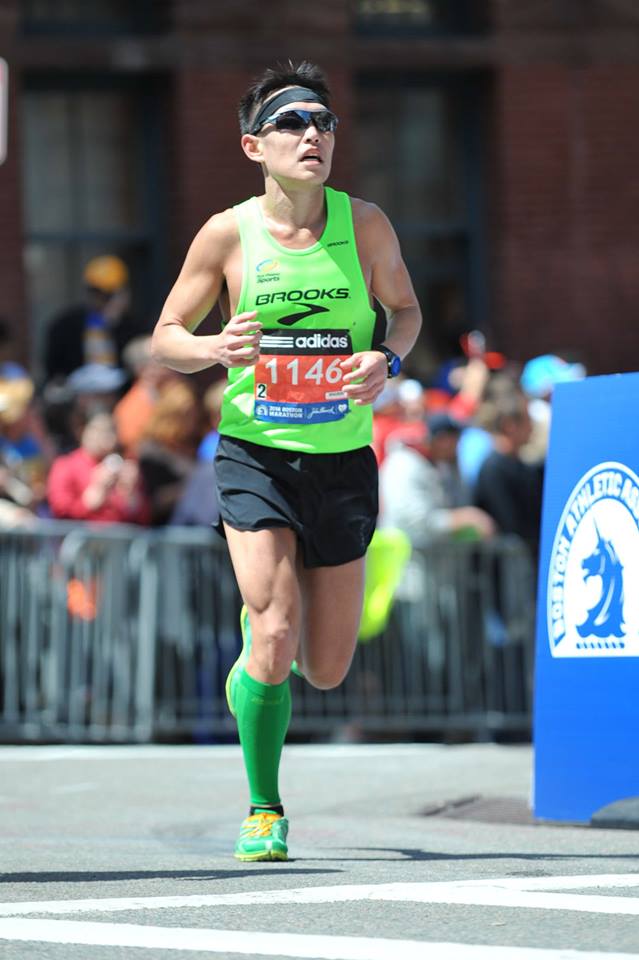

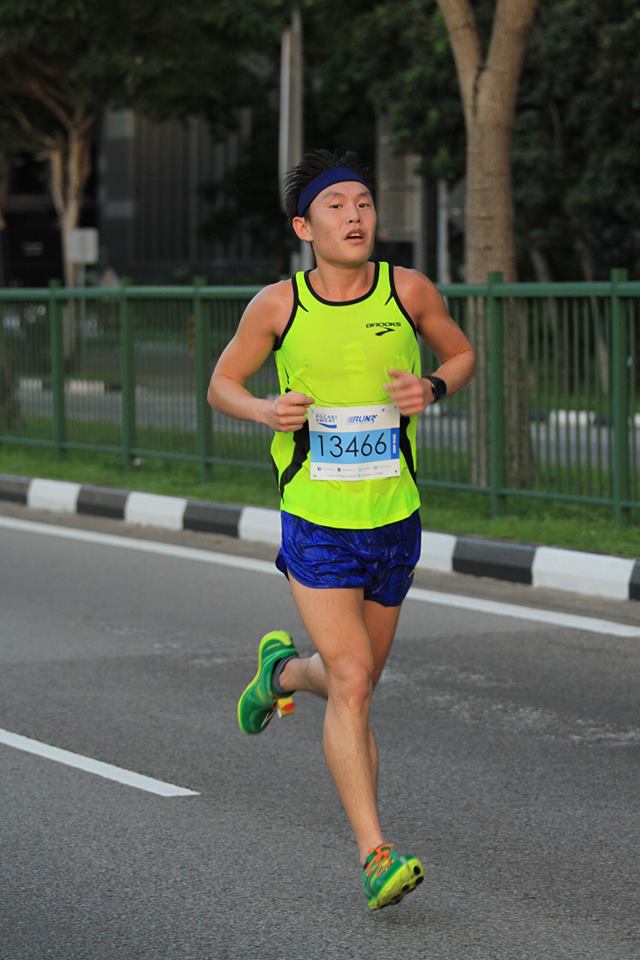
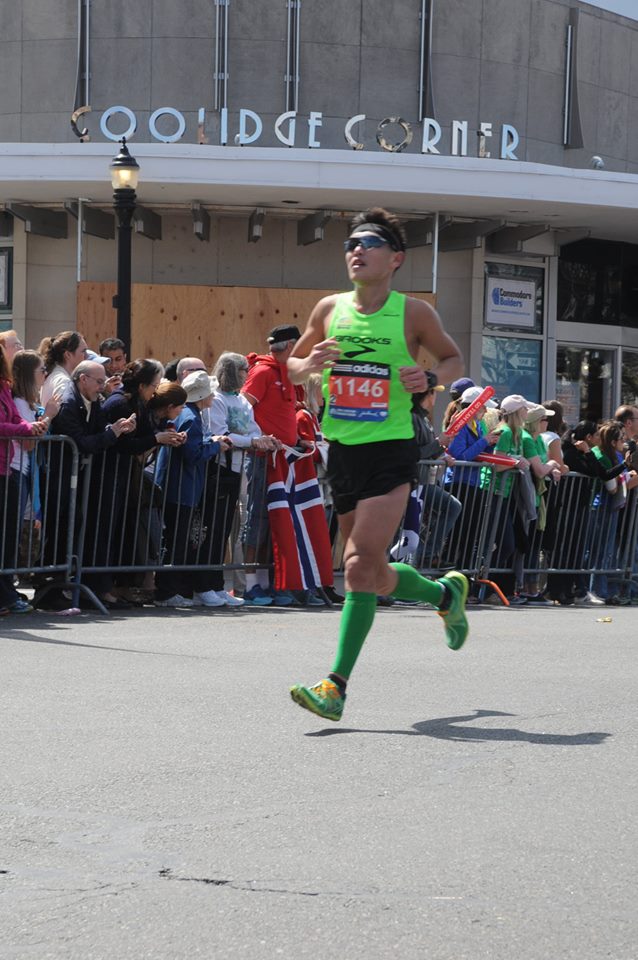
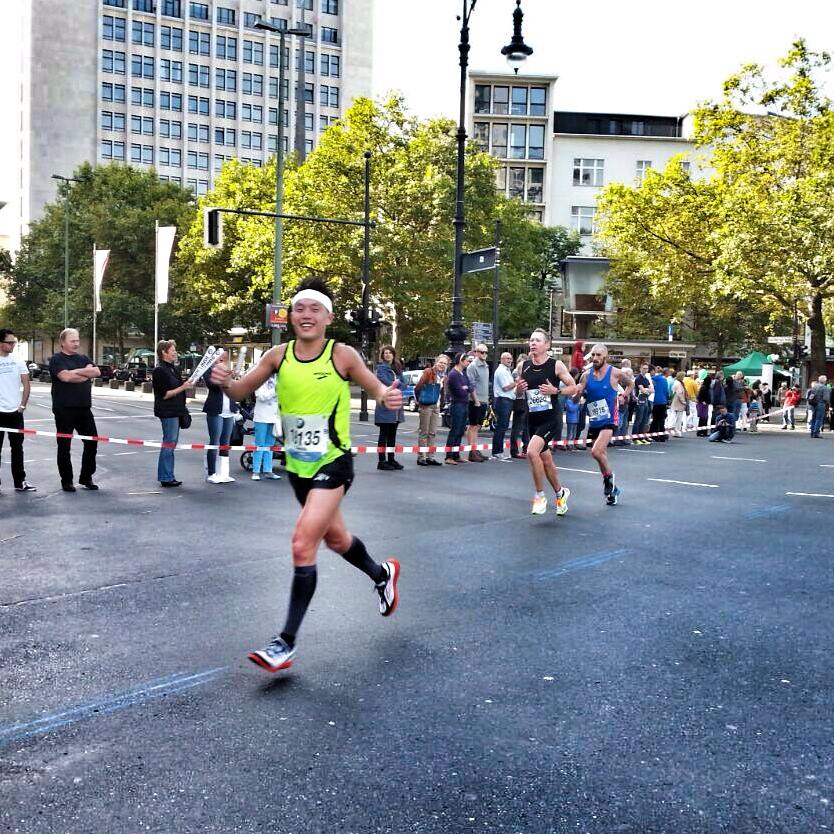
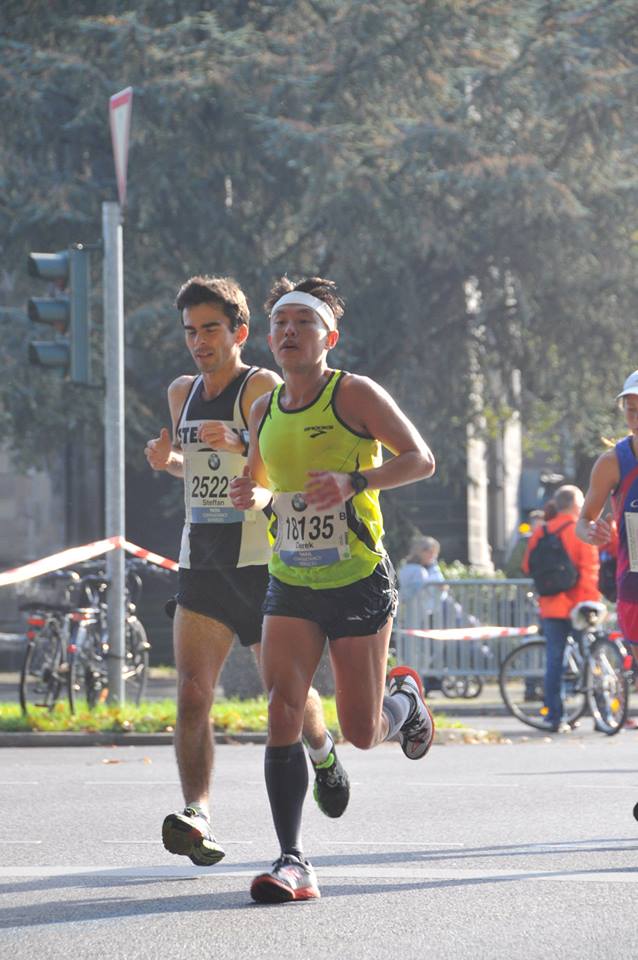
Hello, how can I know what is the programme for a marathon is suitable for me,or can ask for Derek Li to share his own basic training programme
You should go to a physiotherapist familar with running such as Gino Ng (http://www.sportssolutions.com.sg/ot-r.php?ID=1) or a running coach to find out about a marathon training programme that is suitable to your needs. Not everyone has the same health, fitness levels, etc, so there isn’t a standard marathon training programme that is one size fits all.
Thanks for your information
You’re welcome!